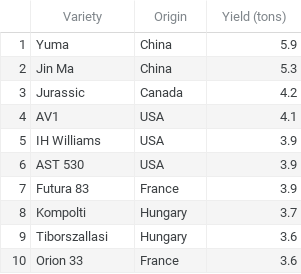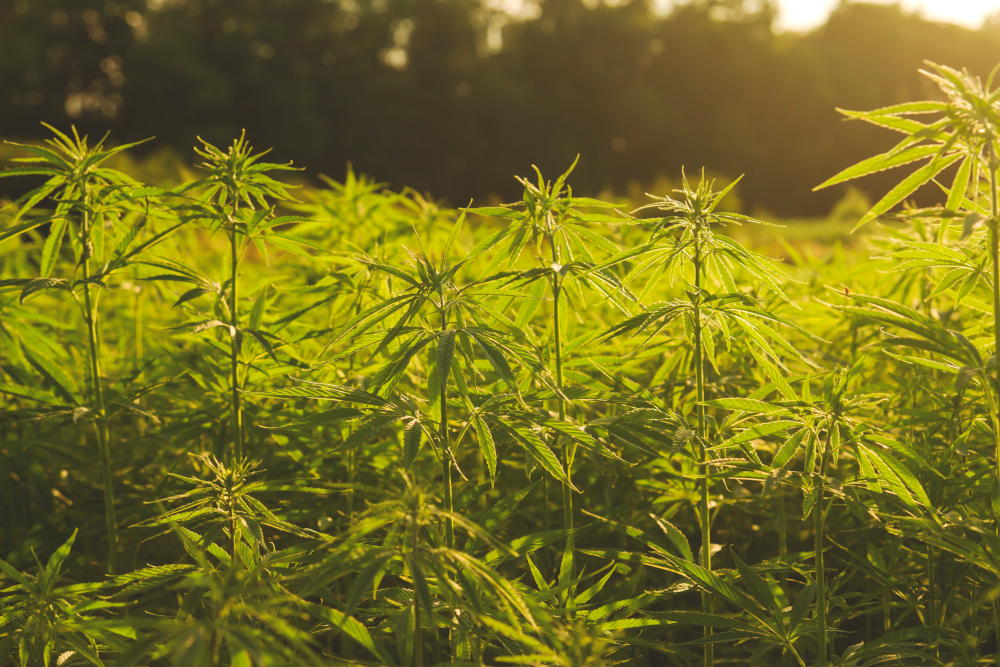Canadian and French hemp varieties offer the most potential yields of grain and straw from a single crop, according to ongoing trials in four Midwestern U.S. states.
Researchers also found that U.S. hemp cultivars dominate in grain production, with nine of the top ten performers coming from American developers.
The researchers, from universities in Wisconsin, Indiana, Michigan and Illinois have studied 61 hemp varieties since launching joint studies in 2018.
While hemp farming has all but disappeared in the four states as the region does a reset following the CBD craze that burned farmers over the past few years, the research is mapping out a future in grain and fiber.
Lost in prohibition
In the Midwest, as elsewhere in the U.S., decades of prohibition resulted in a loss of knowledge about which hemp varieties perform best in the region’s climatic conditions. And since hemp’s resurgence in the last decade, new varieties have been developed that need to be tested, according to the researchers.
While gaining two outputs from one crop – so-called “dual cropping” – has been hyped as a hemp holy grail, studies so far have shown that reality is another story, according to Marguerite Bolt, extension specialist at Purdue University in Indiana.
“The stalk yields for a dual-purpose crop will not typically be as much compared to a fiber-only crop,” according to Bolt. That means there’s a trade-off when it comes to dual cropping.
“With dioecious cultivars, you are losing roughly half of your population by taking the crop all the way to seed because the male plants are dying and breaking down,” she said. “Studies have shown that there is an increase in lignified fiber if harvest of the stems is delayed. This may limit what type of products stalks from dual purpose hemp could go into.
“Growers should keep in mind the processor that they are working with when deciding if a dual crop is what they should be producing,” Bolt suggested.
Top performers
Dual cropping
Caveats aside, hemp varieties from France and Canada – countries where hemp growing has a longer recent history than it does in the U.S. – dominate research results when it comes to harvesting both grain and fiber from a single hemp crop. (Amounts per acre)

Source: Midwestern Hemp Database
Grain production
When it comes to varieties engineered to produce abundant grain, however, American geneticists appear to have raced ahead of Europe and Canada. Of the top 10 producers, the first nine spots are of U.S. origin. (Amounts per acre)

Source: Midwestern Hemp Database
Oil production
Closely related, production of oil derived from hemp grain, a key food output, was best achieved by hemp cultivars from the U.S., France and Canada.

Source: Midwestern Hemp Database
Fiber production
While the leading hemp varieties for fiber production come from China, tests have shown those varieties can grow too big for processing, are often not consistent in height and thickness, and can go over the 0.3% THC limit for industrial hemp. (Amounts per acre)

Source: Midwestern Hemp Database
Shelby Ellison, director of the industrial hemp program at the University of Wisconsin-Madison, said she has seen seed performance improve and bring increasingly better uniformity. “In Wisconsin, we see Canadian, and French and other European varieties perform well due to similar climates,” said Ellison, who sees Wisconsin’s hemp future mainly in fiber.
UW-Madison’s hemp program focuses on fertility and production practices in addition to studying which varieties work best in the state’s northern climate, and collecting data on CBD and CBG levels.
Hard times for hemp
Like other Midwestern states, Wisconsin hemp acres have fallen sharply after hitting a high-water mark of 1,850 acres in 2018. The state did not report any acres under hemp in 2023, according to the annual hemp report from USDA’s National Agricultural Statistical Service (NASS).
Ellison said growers still active in CBD production have found a reprieve from the hemp downturn in producers of delta-8 THC, the synthetic “high”-producing compound present in many products. The controversial products – gummies and other edibles – are based on CBD which is manipulated in the lab. But those profits could be short-term as states across the U.S. are cracking down on the controversial products that contain those psychoactive substances, and language in the upcoming renewal Farm Bill would wipe them out entirely.
Farmers continue to proceed with caution, limiting hemp crops to small experimental plots, Ellison said.
Indiana growers have not reported to NASS for the past two years, but Bolt said there are a few farmers growing for grain, fiber, or cannabinoids, several of whom continue to participate in research trials “and are enthusiastic about the crop.”
“We lack the processing infrastructure that we were hoping for, and that has slowed down growth in the state,” Bolt said. “We have a lot of farmers looking for different crops to put in their rotation. Hemp could be a good option if we have a place for them to take their grain and stalks.”
The other two states in the research cooperative have also seen their hemp fortunes take a downturn. Illinois reported just 290 acres under hemp last year – drastically down from a peak of 2,800 acres in 2019 – while Michigan, which topped out at 1,188 acres of hemp in 2021, did not report any acres to NASS last year.

